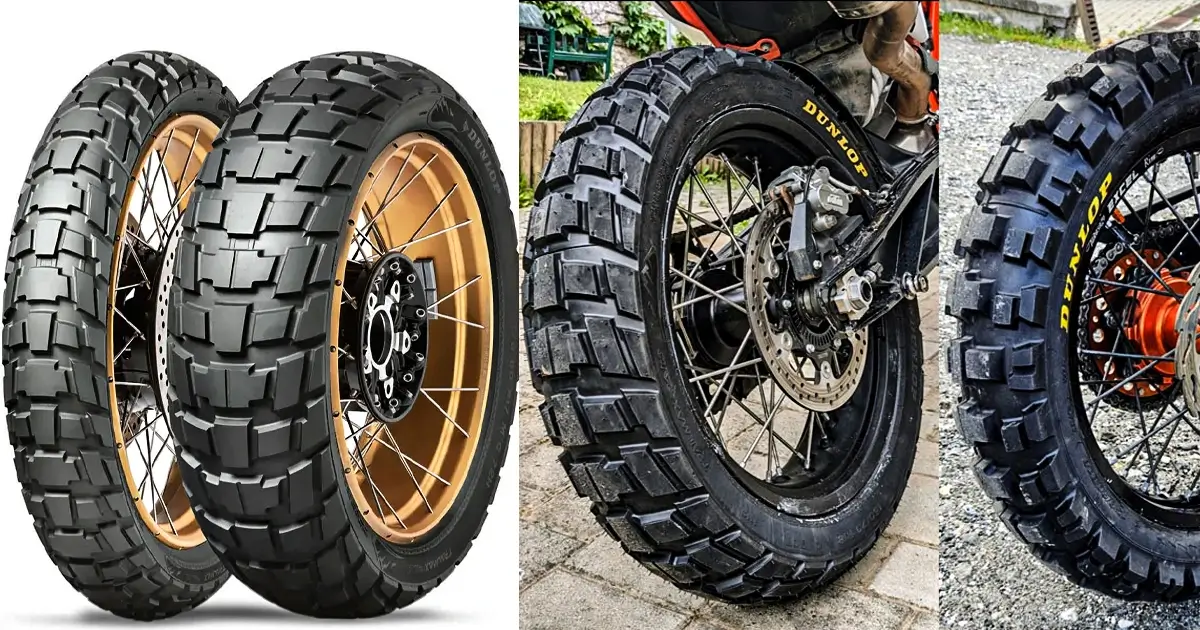When you ride through heavy rain, your motorcycle’s grip on the road can mean the difference between control and chaos. Have you ever noticed how bike tires look so different from car tires? That design isn’t just for style it’s a life-saving detail. Let’s break down how motorcycle tires prevent hydroplaning and why that clever design leads to faster wear.
How Motorcycle Tires Prevent Hydroplaning
Hydroplaning happens when a layer of water builds up between the tire and the road. Instead of gripping the surface, the tire slides on water, losing traction. Cars face this too, but motorcycles deal with it in a more critical way because they rely on just two small contact patches.
Motorcycle tires are designed with deep grooves and curved profiles. Those grooves, often called “tread patterns,” channel water away from the center of the tire. As the tire rolls, water moves outward through the grooves and is pushed off the sides, keeping the contact area as dry as possible.
The Secret of the Round Profile
Unlike car tires, which are flat, motorcycle tires are round. This curved shape helps cut through water like a boat’s hull. When you ride straight, the center of the tire makes contact with the road. When you lean into a turn, the side of the tire takes over still maintaining water flow and traction.
That’s why even during a turn in the rain, bikes manage to grip the surface better than you might expect. The rounded shape constantly pushes water away instead of trapping it underneath.
Why Motorcycle Tires Wear Out Faster
Now, here’s the trade-off. The same design that saves you from hydroplaning also causes faster wear. Motorcycle tires have softer rubber compounds compared to car tires. This softer material offers better grip and flexibility essential for quick braking and sharp turns but it also means they wear out sooner.
Car tires are made for longevity. They use harder rubber since four tires share the weight and workload. A motorcycle tire handles all the load on just two contact points. Add in the cornering forces, braking pressure, and constant heat cycles, and you get faster tread wear.
Real-World Example: Rain vs. Summer Riding
Take a rainy ride through city traffic. Your bike tires slice through puddles with ease, thanks to those grooves. But after a long summer season of dry, hot roads, you’ll start to see the tread fading faster. The heat softens the rubber, and the edges begin to flatten from repeated cornering.
A sportbike tire might last only 5,000 to 7,000 kilometers, while a car tire can go beyond 40,000 kilometers. That’s not poor quality it’s performance trade-off.
Tread Depth and Safety
Motorcycle tires usually start with less tread depth than car tires, often around 5 to 7 millimeters. When the tread gets too shallow, water can’t escape quickly enough. This increases the chance of hydroplaning. That’s why experts recommend replacing tires when the tread depth hits around 2 millimeters or sooner if you ride often in wet conditions.
Also Read:
- Nearly 30% of UK Drivers Believe Car Tax Should Be Based on Mileage — Survey
- Why Planes and Boats Escaped the Luxury Tax But Cars Didn’t
- Australia’s Headlight Confusion: Authorities Warn Drivers After Viral $250 Headlight Rule Goes Wild Online
- 2025 Hyundai Venue Facelift Launched in India – Full Details, Variants, and Price
- Royal Enfield Bullet 650 Unveiled at EICMA 2025: A Classic Legend Returns
Rider Tips: Getting the Most Out of Your Tires
To make your tires last longer while keeping safety in check, follow these simple steps:
- Check air pressure regularly. Low or high pressure affects how the tire contacts the road.
- Avoid aggressive acceleration. It burns through rubber fast.
- Clean off oil or dirt. Contaminants reduce grip and cause uneven wear.
- Replace both tires together if needed. Matching tread patterns improve water drainage and balance.
Expert Insight: Balance Between Grip and Durability
Professional riders often say, “Tires are your only connection to the road.” That connection has to balance grip, comfort, and durability. A tire with deep grooves might handle rain beautifully but wear faster on dry asphalt. On the other hand, a slick or semi-slick tire offers maximum dry traction but risks hydroplaning the moment rain hits.
That’s why manufacturers like Michelin, Pirelli, and Bridgestone invest heavily in compound research. Modern tires use silica-based compounds that improve both wet grip and longevity. Still, there’s always a trade-off you can’t have everything in one tire.
Final Thoughts
Motorcycle tires are small engineering miracles. Their curved profile, water-channeling grooves, and soft grip compounds work together to keep riders safe especially on wet roads. Yes, they wear out faster than car tires, but that’s the price of precision and safety.
If you ride often, treat your tires like part of your safety gear, not just another component. Check them, clean them, and replace them when needed. After all, two small patches of rubber are what stand between you and the road rain or shine.
